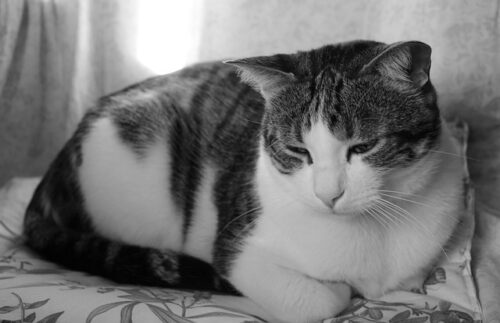
Feline depression is real and can affect cats just like it does humans. It could be due to physical or psychological reasons, so if you’re worried about your cat’s behavior, a vet visit is a must to rule out health issues. Cats are great at hiding pain, so if they’re acting off and haven’t been to the vet in a while, make sure to get them checked.
This article focuses on depression that’s not linked to a health condition. Cats, like us, can go through periods of depression, whether it’s a minor mood shift or something more serious—like after the loss of their owner.
Pay Attention to Any Changes in Your Cat
Just like humans, cats have their own personalities, enjoy routines, and feel happiest when they feel safe in their environment. So, if you notice any changes in your cat’s behavior or routine, it’s a sign they may be experiencing depression. Before assuming your cat is depressed due to environmental factors, it’s essential to rule out any physical health issues.
10 Signs That Your Cat Could Be Depressed:
1. Avoiding You – Your cat no longer wants to be close to you.
2. Decrease in Grooming – Your cat may stop grooming or reduce the amount they do.
3. Excessive Sleeping – They may sleep much more than usual, both day and night.
4. Loss of Appetite – Food that once excited your cat no longer seems interesting. Obsessive chewing of non-food items may develop (a condition known as feline PICA).
5. Personality Change – Excess vocalization or lethargy and lack of enthusiasm.
6. Loss of Interest in Play – A cat that once loved playtime now shows no interest in it.
7. Increased Hiding – Your cat may spend more time hiding, appearing less around the house.
8. Litter Box Issues – Doing its business outside the litter box is a common sign of distress.
9. Self-Inflicted Hair Loss – Excessive grooming or biting leading to bald patches can indicate anxiety or depression.
10. Aggression – Increased aggression, such as hissing, swatting, or biting, can be a sign of underlying depression or anxiety.
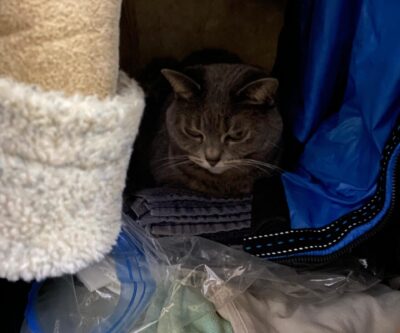
What Causes Depression in Cats?
Several factors can trigger depression in cats, and understanding the root cause is essential for effective treatment.
Separation or Loss
Cats form strong bonds with their owners and can feel deeply distressed when there’s a separation or loss. Whether a family member moves away or passes on, the cat’s depression can persist for a long time, especially if they were strongly attached to the person. During such times, it’s essential to rebuild a sense of security and connection with your cat, which can be achieved by taking steps to build trust. This approach can help your cat feel more confident and less vulnerable during emotionally challenging periods.
Relocation Stress
Moving to a new home can be traumatic for a cat. Cats are territorial creatures, and the unfamiliarity of a new space can cause significant stress. If you recently moved, your cat may struggle to adjust. Fortunately, there are ways to relax your cat during this transitional period.

New Pet or Human in the Home
Introducing a new pet, especially a dog or another cat, can be stressful for your cat. If the new pet doesn’t get along with your cat, it can lead to both physical and behavioral symptoms of depression. If the new pet is another feline, it’s important to take steps to stop aggression between cats and help them adjust to each other’s presence. Similarly, a new person joining the household can also cause stress, potentially leading to changes in your cat’s behavior.
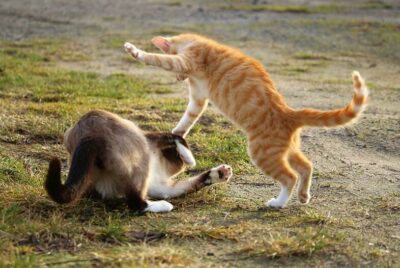
Litter Box Stress
Cats are fastidious creatures, and a dirty litter box can lead to stress and even depression. Placing the litter box in an inconsistent or less-than-ideal location can also confuse them and cause discomfort. To keep your cat happy and stress-free, always maintain a clean litter box in a permanent, ideal location, ensuring a stable routine.

Travel Disruptions
Frequent moves, road trips, or changes in environment can be stressful for cats, as they rely on routine and familiar surroundings to feel secure. Unfamiliar scents, new places, and travel-related confinement may lead to anxiety, loss of appetite, or even depression. Providing comfort items, maintaining feeding schedules, and offering a quiet, safe space can help ease the transition. Learn how to relax your cat when traveling by creating a calm environment and ensuring they feel safe throughout the journey.
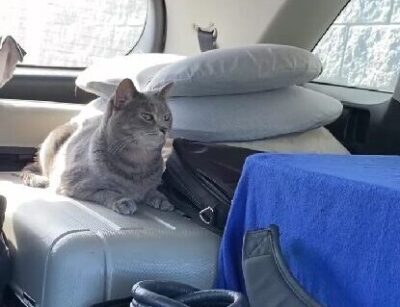
Lack of Attention
Cats may also develop depression if they feel neglected. If you’re working longer hours or experiencing your own emotional distress, your cat may not be getting the attention and affection they need. Cats, especially breeds like Siamese, Burmese, and Tonkinese, require a lot of social interaction. If you’re away from home often, make sure your cat has ways to entertain himself (or herself) while alone to reduce boredom that could lead to depression.
Seasonal Affective Disorder (SAD)
Just like people, cats may experience depression due to seasonal changes. A lack of sunlight during the winter months can lower melatonin and serotonin levels, leading to sadness. Even indoor cats are affected by these changes.
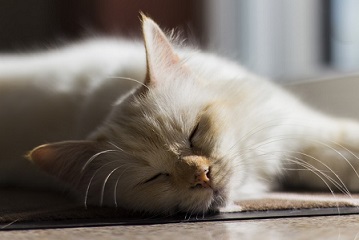
What You Can Do to Help Your Cat
To help your cat overcome depression, it’s important to maintain a routine and provide a stress-free environment. The following strategies can help boost your cat’s mood and help them feel more at ease:
1. Playtime is Essential
Cats need to play daily to stay happy and healthy. Playing with your cat for at least 15 minutes each day can do wonders for their mental health. The importance of playing with cats cannot be overstated; it’s not just about fun—it’s essential for their well-being.
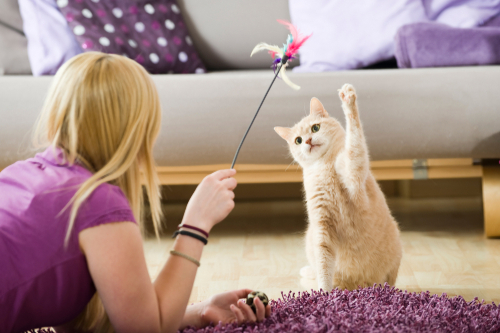
2. A Consistent Routine for Your Cat’s Well-being
Cats thrive on routine, and consistency in daily activities helps prevent stress and depression. From regular mealtimes to the same type of food and bowl, maintaining a steady routine gives your cat a sense of security. Disruptions in their environment or schedule can lead to anxiety and behavioral issues. Stick to feeding your cat at the same times each day, with the same food, and in the same spot to support their mental well-being.
2. Pamper Your Cat
Spoiling your cat can help reduce stress and anxiety. Massaging your cat’s body or grooming them with a brush can help them relax. Just like humans, cats experience pleasure through physical touch.

3. Create a Stimulating Environment
A window to look outside is crucial for mental stimulation, and human voices, whether through a radio or TV, can positively affect your cat’s mood. Studies show that cats can distinguish their owner’s voice from others (source). While the radio or TV won’t have your voice, it still provides a sense of companionship.
Additionally, interactive toys, puzzle feeders, climbing structures and hiding spots enrich your cat’s environment, keeping them engaged and mentally active. This environmental enrichment prevents boredom, encourage exploration, and offer ongoing entertainment, promoting overall well-being and reducing the risk of depression.
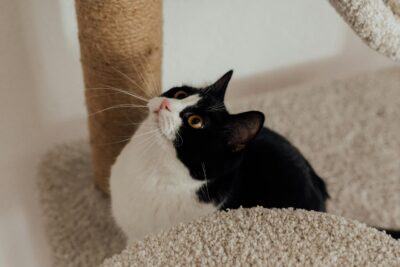
4. Proper Litter Box Management for a Happier Cat
Regularly cleaning your cat’s litter box and keeping it in a stable, quiet location is essential to preventing stress and potential depression. Cats thrive on routine, so avoid moving the litter box frequently. A clean, consistent environment ensures your cat feels secure and comfortable, supporting their mental well-being. Any changes to the litter box—such as the type of litter, its location, or the box itself—should be made gradually.
5. Introducing New Pets Properly
When introducing a new pet to your home, it’s vital to build trust through regular play and positive interactions. For a new cat, ensure that both cats have separate litter boxes. When a dog is introduced, their food should be kept separate from your cat’s food. I wrote an article on keeping dogs out of cat’s food to address this issue effectively.
Final Thoughts on Cat Depression
If your cat is showing signs of depression, it’s essential to take action early. Managing the environmental factors contributing to your cat’s emotional distress can make a significant difference. If the depression persists despite your efforts, consult with your vet to explore other options, including medications. But remember, it’s always best to try natural methods first.
Helpul Links:
WebMD: “Why is My Cat Sad?”
Cornell University Veterinary Medicine: “Feline Lower Urinary Tract Disease”
PetMD: “Does Seasonal Affective Disorder Affect Pets?”
Some content contains affiliate links or samples for reviews; I may receive compensation. Learn more
Leave a Reply